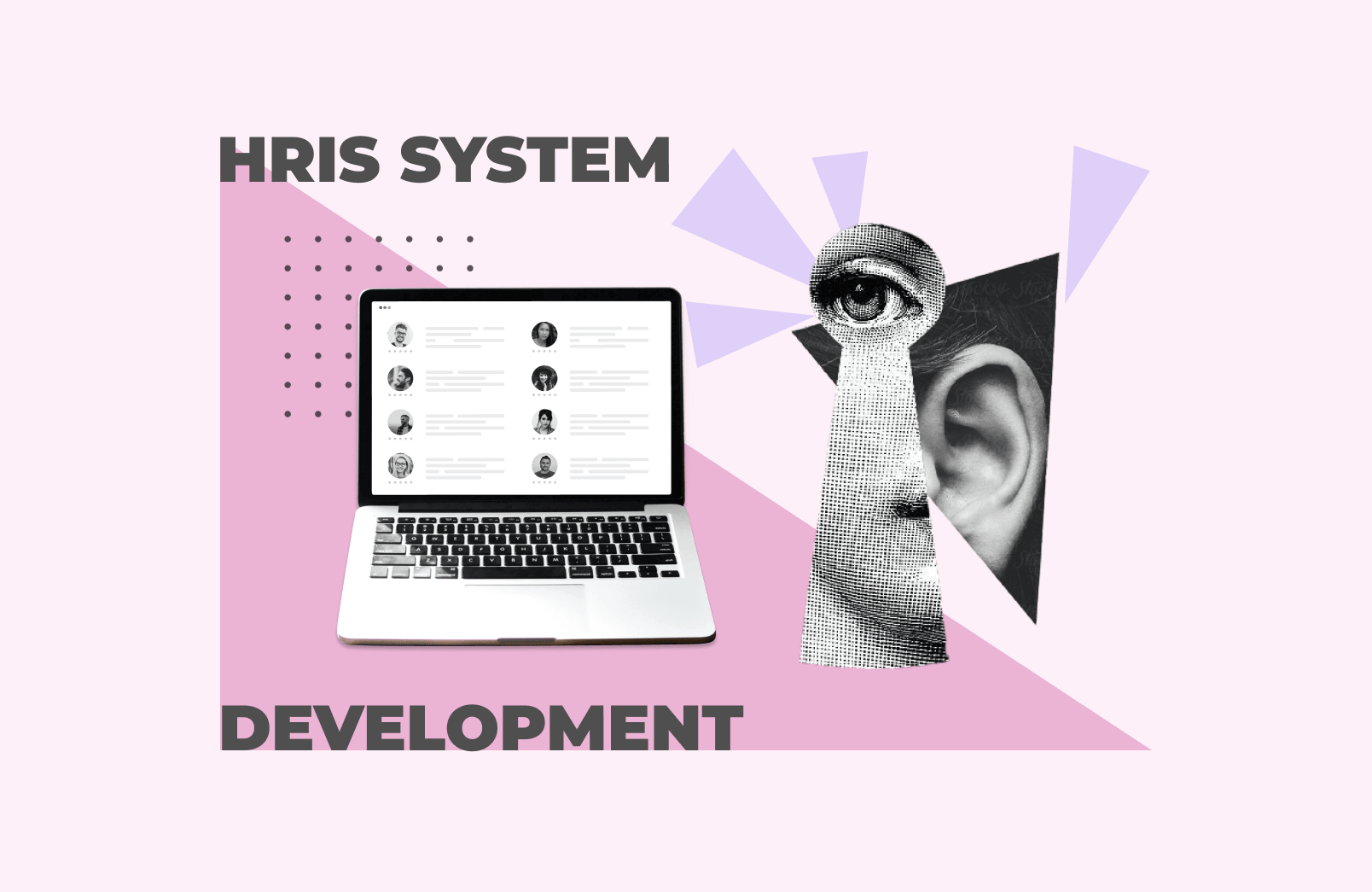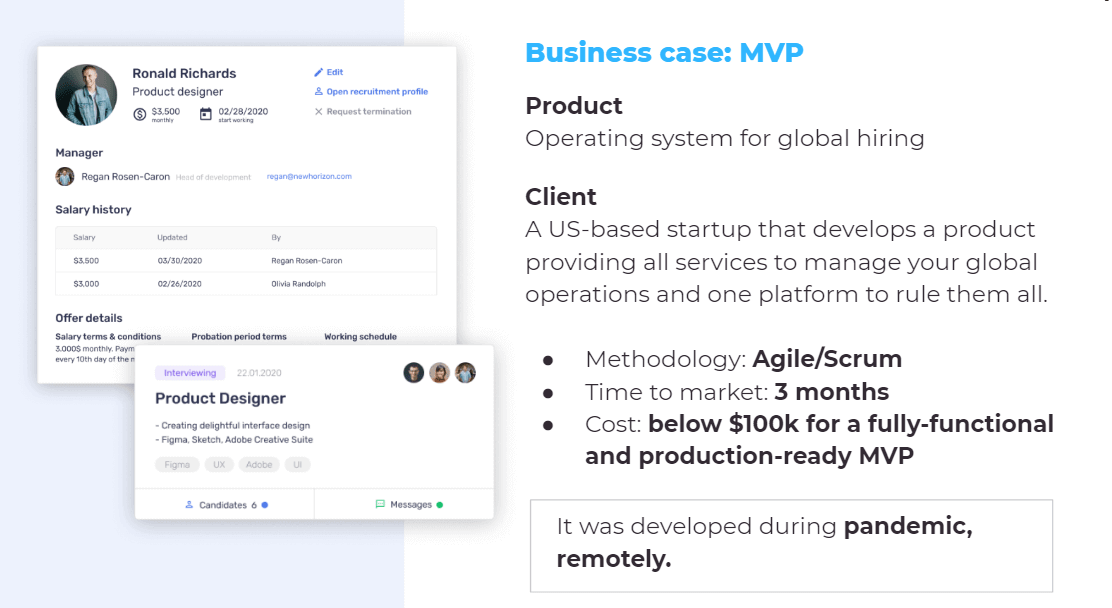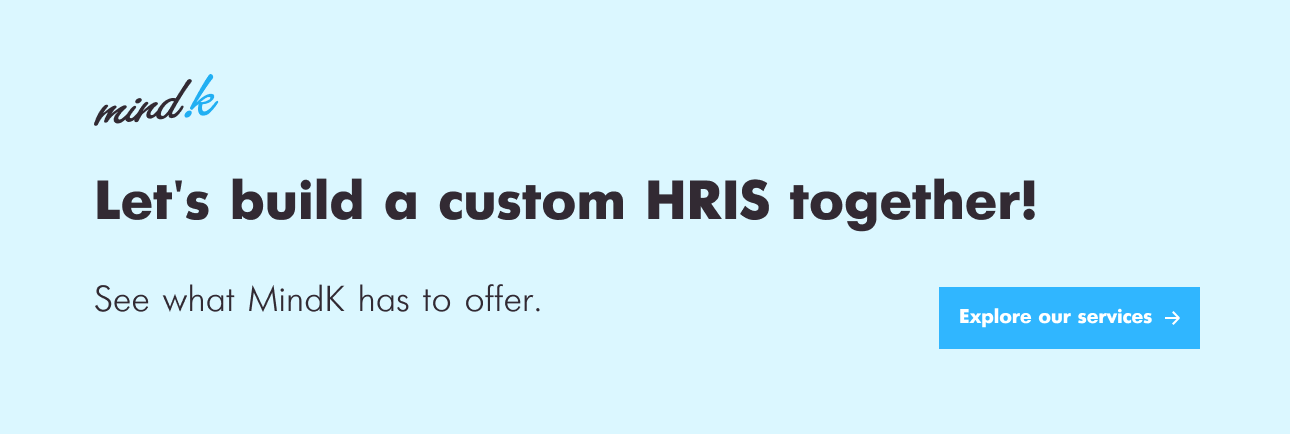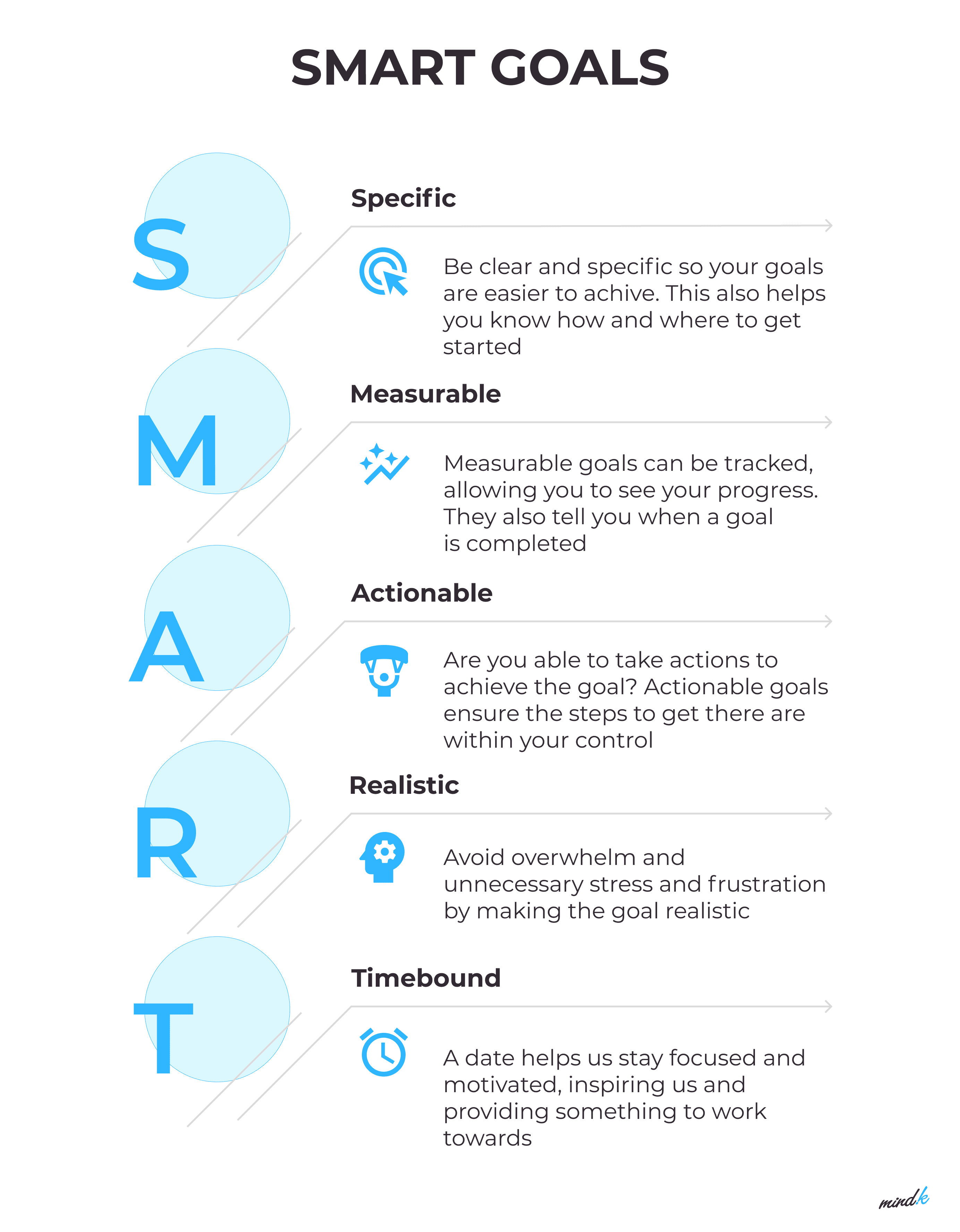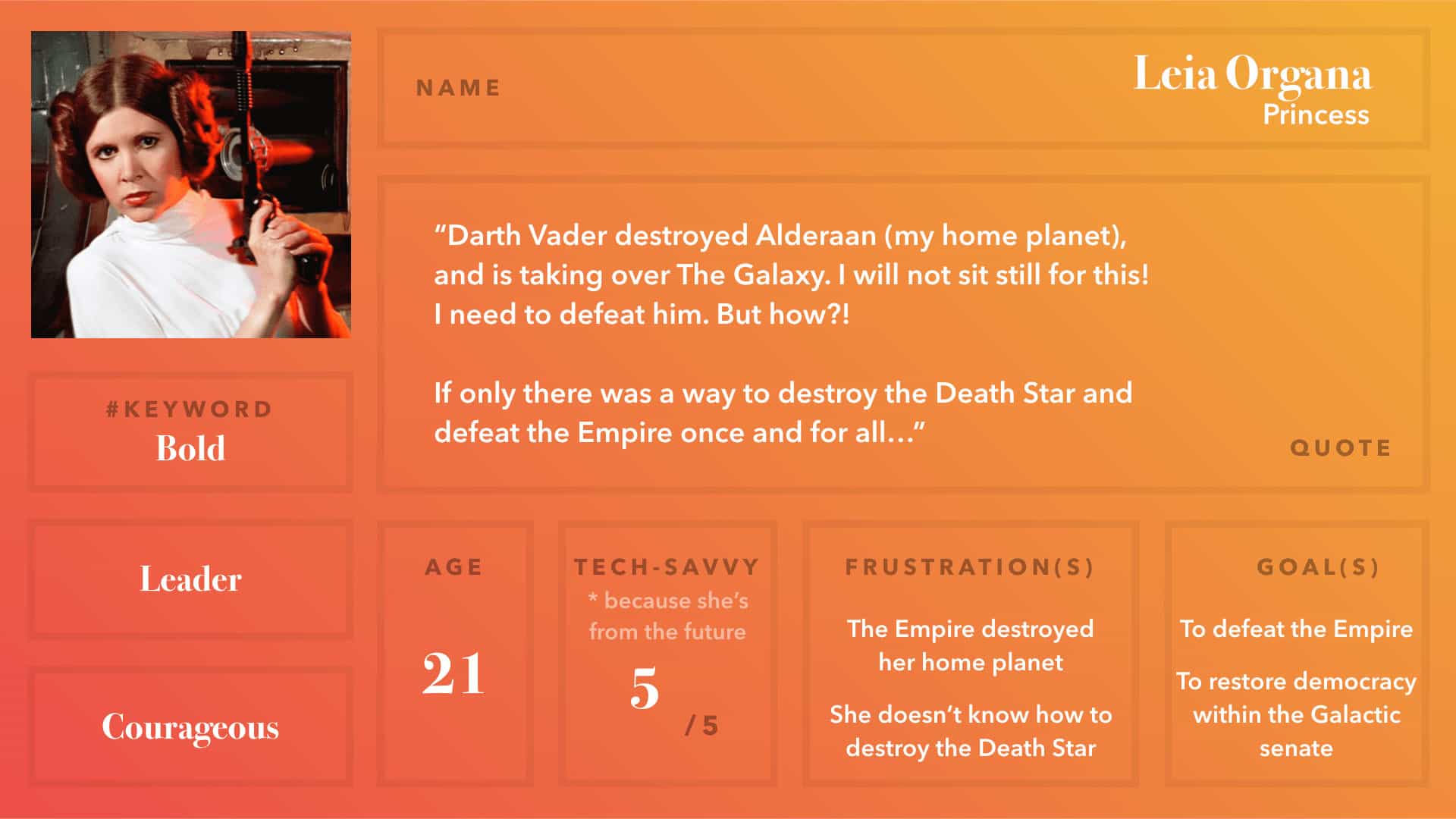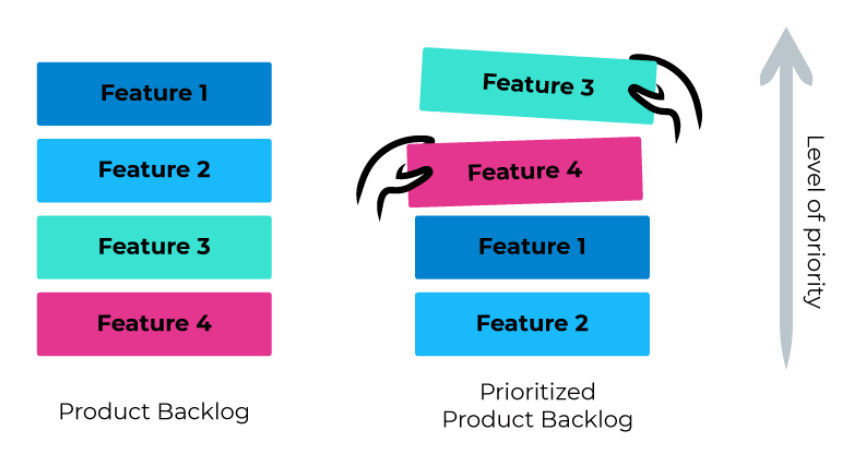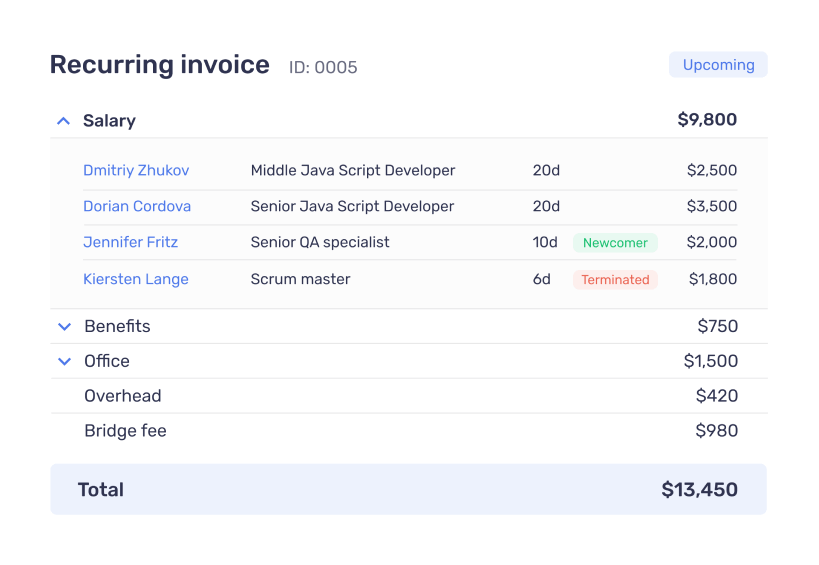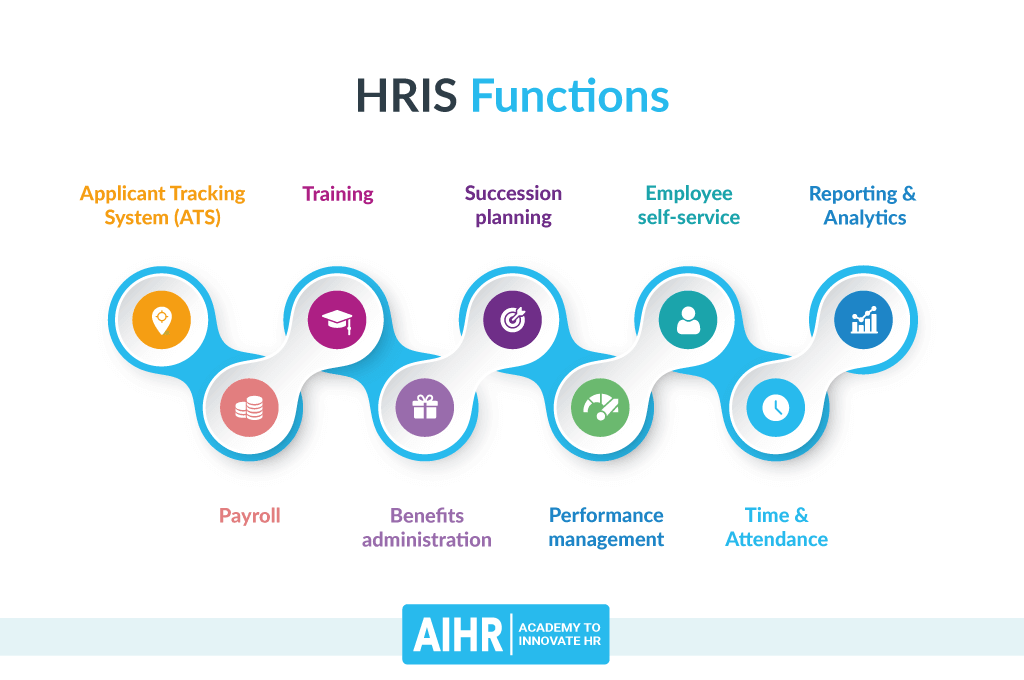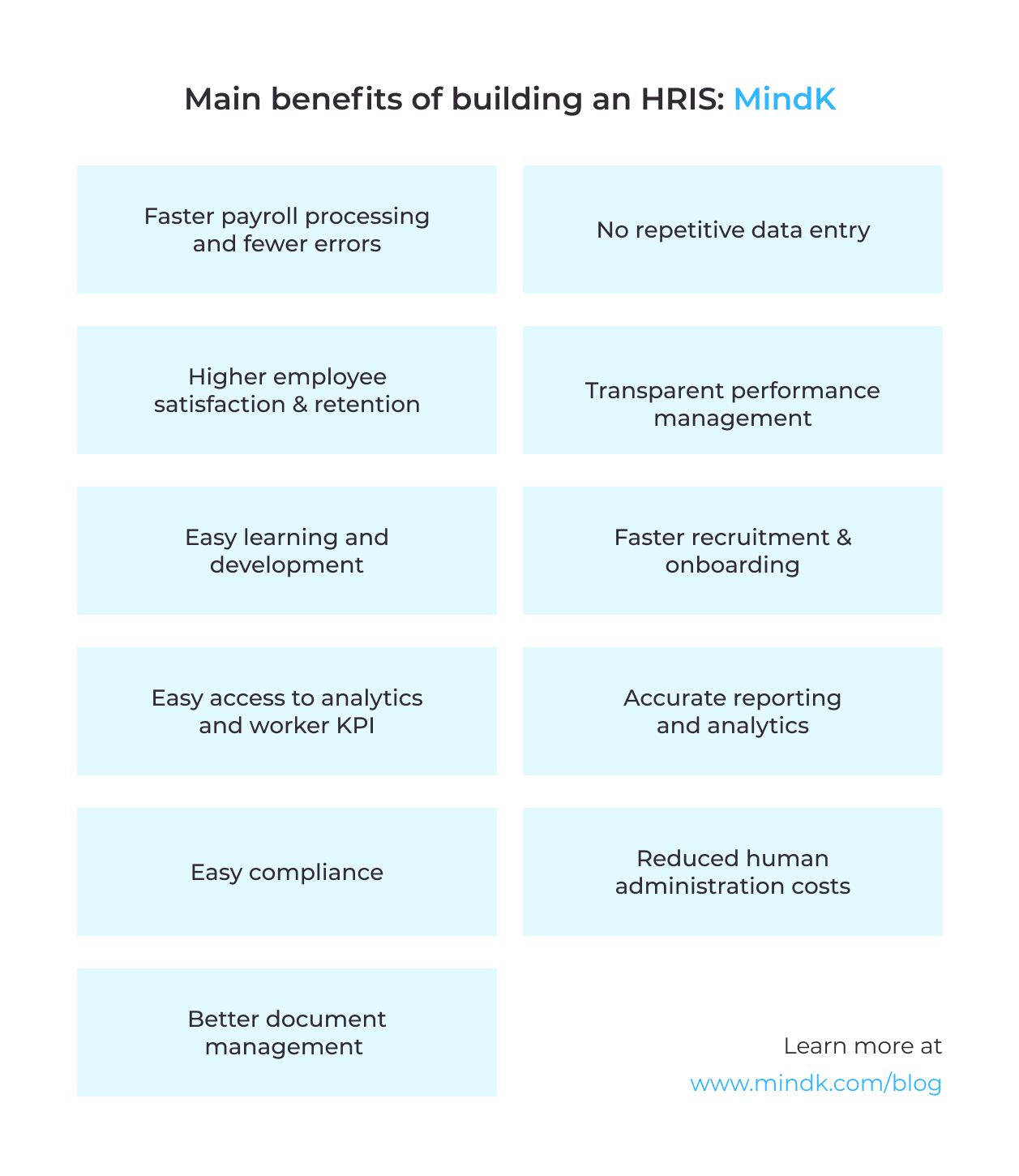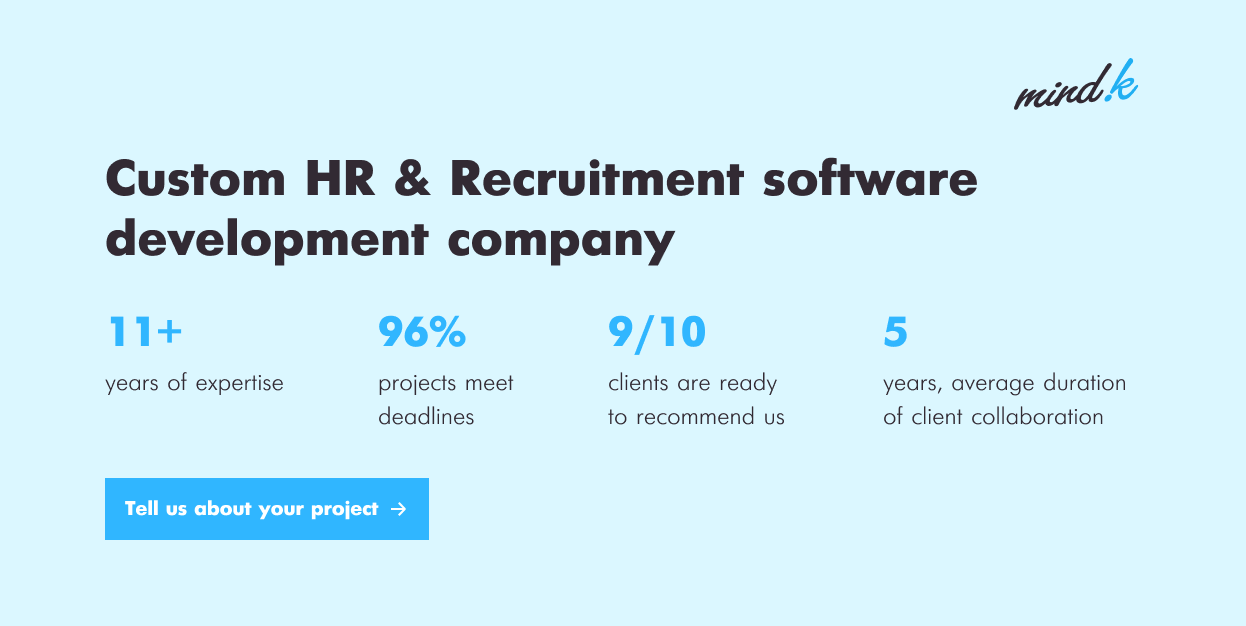HR managers are often tired and overwhelmed. Building a Human Resource Information System (HRIS) can free them from routine tasks helping to focus on attracting and retaining top talent. This guide will detail everything you need to know about the development of HRIS.
MindK had the recent honor of taking part in designing and developing a custom HR system for one of our clients. The process included everything from defining the requirements for a new product to mapping the user journey, creating an HRIS database design, and completing a Minimum Viable Product in just 3 months during a lockdown. Below are the insights we gained during our human resource management software project.
Table of contents:
- What is a Human Resource Information System?
- Define your goals and expectations
- Gather a team for HR system development
- Conduct project discovery workshops
- Develop a Minimum Viable Product
- Grow your human resources system
Explore the full case study [Bridge]
What is a Human Resource Information System?
HRIS is a piece of software that covers the company’s human resource needs. At its core, it is a database with information about your employees. It can include their date of hire, roles, duties, contacts, wages and benefits, paid time off, promotions, and more. HRIS automate all sorts of tasks. From payroll management to time and attendance tracking, onboarding, compliance, employee retention, and so on.
Human Resource Management System (HRMS) is a related term. Sometimes, it’s used to describe a more advanced version of an HRIS. More often, they mean the same thing (we’ll use both terms interchangeably).
Define your goals and expectations
Your HRIS can be anything from a small database of employees to a complex enterprise system with dozens of modules. Know what you need and you’ll get a solution that meets your company’s unique requirements.
- Set your high-level goals. What do you want to achieve with the new software? For our client, the main goal was transparency in hiring and people management. These goals dictated all product-related decisions. From the development of a self-service HR portal to applicant tracking, salary & benefits administration, invoicing, and office management.
- Research the market and understand the different types of users that will benefit from your HRIS. A good starting point is to check our article on human resource management trends.
- Identify key stakeholders. Who will use the new software? Who will make the project-related decisions? Consult your executives, HR leads, and people who will use the new HRIS in their daily work. A wide range of perspectives will help you get a well-designed product and avoid internal conflicts. For our client, the decision to build a Bridge HRIS was a natural extension of their business model. As executives saw a clear value in the new solution, they took an active part in the development process. Not all projects are this smooth as we have to mediate between multiple stakeholders and resolve internal conflicts.
- Analyze your HR processes. Where do you store your HR data? In what format? How do you use it in your workflows? By answering these questions, you can start to identify bottlenecks and pain points in your current HR workflow. If you encounter any difficulties at this stage, you can benefit from working with a professional Business Analyst (more on that later). Defining objectives early on will help you craft a Request for Proposal (RFP) you can use when searching for the right vendor.
Gather a team for a human resource management system project
Building an HRIS is a team effort. It requires a variety of skills and backgrounds, both from within your company and outside. Start by asking yourself a couple of questions:
– Which roles do you need on your HRIS team? Which can be employed part-time and which will have to be 100% involved in the project?
– Which skills do you currently lack in your organization?
– Based on your team’s current skills, which types of consultants and vendors can you hire to help you implement the project? If you don’t have all the necessary expertise in-house, think about finding a trusted development partner.
Here’s a short list that can help you understand the roles and responsibilities when working on HRIS projects:
- Project sponsor is responsible for approving budgets and major financial decisions. Depending on the size of your company, this might be one of your C-levels, an executive committee, or an external investor (as in the case of our client’s Bridge project).
- Product Owner is a person in charge of project vision and strategy. In the case of our client, the Bridge CEO took part in major meetings, brainstormed solutions to user problems, helped prioritize HRIS features, and set acceptance criteria for the development team.
- Project manager will directly oversee the HRIS development process. While developing the Bridge app, our project manager was responsible for planning, mitigating the risks, and managing the budget, scope, and project schedule. They also served as a bridge between the remote team and the client.
- Business analysts can extract HRIS requirements and translate them into technical specifications. Software vendors often employ professional business analysts that can help you collect requirements for a new project.
- Tech lead is responsible for HRIS system design, its architecture, and major tech-related decisions. You can leave this role to your CTO or hire an external tech lead.
- UI/UX designer will create the app’s look, design its interface, shape the user journey, and build interactive prototypes.
- Developers write the application code, help you choose technologies for the project, and make accurate budget estimations based on your requirements.
- Quality Assurance (QA) engineers ensure your HRIS meets the business requirements. Their main job is to detect bugs and defects in the code before they negatively affect your bottom line.
- User testers are people from your HR department that will try out the newly developed HRIS. They can provide valuable feedback to improve your product.
Selecting the right development team can go a long way towards building a great HRIS. If you’re looking for reliable vendors, start by checking their track record and customer reviews. If possible, contact their previous clients. Remember, due diligence can help you avoid most of the outsourcing risks.
Conduct project discovery workshops
A project discovery phase is a great way to detail your requirements and help the development team understand your vision. The phase consists of several workshops that help move you from ideas to implementation of the HRIS system.
When working on the Bridge project, we had 3 two-hour meetings with key stakeholders (project sponsor and the CEO) and the development team – the Business Analyst, Tech Lead, and the Project Manager.
These first meetings aim to learn more about your company and expand on the product idea. The development team will ask questions about your vision:
– What is the goal of the new product?
– What will motivate users to take actions in your HRIS?
– What kinds of data will you use in the HRIS software?
By the end of the first meeting, you’ll define the goals for your product. We recommend our clients to keep all objectives S.M.A.R.T. – Specific, Measurable, Achievable, Relevant, and Timely.
Our next task is to understand the target audience for your product. When working on Bridge, we discovered that intended users could be grouped into several distinct categories – recruiters, applicants, client’s HR managers, accountants, and so on.
One of the best ways to understand your users is to create personas or fictional representations of your target audience. Try to understand their motivations, goals, pain points, and unique needs.
Source:uxplanet.org
Map out the journey your personas have to make to resolve their pain points. You can start with large pieces of functionality like logging in to your application. The development team can help you split these chunks into smaller user stories:
As [an HR manager] I want to [get an invitation link] so that [I can sign up for the HRIS].
As [an HR manager] I want to [complete the registration form] so that [I can start using the HRIS].
As [an HR manager] I want to [log into the system using my password] so that [I get access to the HRIS functionality]
These stories will form the product backlog – the list of features available in your system. Now, it’s time to prioritize them according to their value. If you have just a couple of stakeholders like Bridge, you can simply group those stories into Must-haves and Nice-to-haves. For larger organizations, it’s better to use other ways to prioritize your backlog like M.O.S.C.O.W. or Value vs Complexity models.
There will be some dependencies between features that will influence the way you set your priorities. For example, you can’t manage wages & benefits without having an employee database. That’s why prioritizing features is a team effort that requires both technical expertise and business acumen.
Develop a Minimum Viable Product
Once you have a prioritized backlog, the development team can start detailing the features for your Minimum Viable Product (MVP).
MVP is a basic version of your app with only the most valuable features included. Bridge 1.0. was built not to impress, but to gather feedback from real users and test our assumptions. Here are a few features of human resource information systems you can choose from our recent article on HRIS:
- Applicant tracking. Hiring the right talent is the first step in HR workflows. Applicant Tracking Systems can help you post vacancies across different boards & social media, gather hundreds of resumes, quickly shortlist the best candidates, and easily schedule job interviews.
- Onboarding. An automatic launch of onboarding and induction processes can help the employee settle on a new job while reducing the number of requests to HR managers
- Employee data management. An internal database is one of the most important components of any HRM system. It can contain all sorts of employee information, from the date of hire to promotions history, current position & duties, benefits, insurance, or similar.
- Time & attendance. Learn how much time your employees spend at work and help them log paid time off without bothering your HR managers. Checking in with fingerprints/card allows you to easily detect employees who are late for work or skip on their duties.
- Performance reviews. HRIS software can simplify regular 360-degree reviews and free your HR staff from a ton of manual work. It can also help you track employee performance over time, to manage promotions objectively.
- Payroll & taxes. Combine employee information with time and attendance data to automatically pay your workers at the end of a month, deduct taxes, and benefits contributions.
- Benefits management. Benefits like stock options, health insurance, and retirement contributions are an important part of employee compensation. HR portal development can help your workers choose options inside your HRIS and collect benefits
- Learning & development. Learning Management Systems allow you to view worker qualifications, skills, and certifications right inside of your HRIS as well as create individual learning courses and group lessons.
- Analytics & reporting. Make automated reports on worker performance, predict turnover, identify goal-oriented applicants, discover unhappy employees, and much more.
It’s also essential to look beyond the functional requirements for a human resource management system. Security is absolutely critical. Leaking HR information can have serious consequences in the age of GDPR. So look into encrypting sensitive data, role-based access controls, logs that record user actions, data classification, multi-factor authentication, and other security measures.
Now that you’ve selected the features for your MVP, the project can head to the development stage. While engineers are writing the code, the QA specialists will immediately test it to discover any defects. The aim is to release a bug-free demo for key stakeholders. Your company will have a couple of weeks to test the system in real-life conditions and submit feedback that will influence further development.
Find out how MindK can help you with human resource management software development as a reliable tech partner.
Grow your human resources system
Releasing an MVP is only the first step towards implementing your HRIS. After the Bridge 1.0 release, the team gathered for a retrospective meeting to analyze what went both well and wrong during development.
We then re-prioritized the backlog using the insights gained while building the MVP. The team selected next-priority features like invoicing, chat, and recruiter cards to be completed in one iteration. The development process will continue until there are no valuable features left in your backlog.
At this point, you can move the project to the maintenance phase, with developers providing on-demand support and training to your employees. Once you have a working system, it’s time for post-live evaluation. Measure the HRIS effectiveness against the KPIs you defined earlier, monitor performance, and ensure the solution satisfies all your requirements.
Conclusion
Good talent management is a key driver of success. Adopting a human resource information system can help you cut administrative costs, eliminate duplicate data entry, and provide rich analytical capabilities needed to grow your business.
If your company has unique needs or HR workflows, the development of HRIS becomes a cost-effective way to automate your internal processes.
Use the guide above to identify your requirements, gather a team of professionals, and launch the development of your HR solution. If you run into any difficulties along the way or need help to realize your vision, you can simply message us.
MindK is a custom software development company that specializes in HR and recruitment solutions. Just fill the contact form and we’ll call you back to organize a free consultation.
